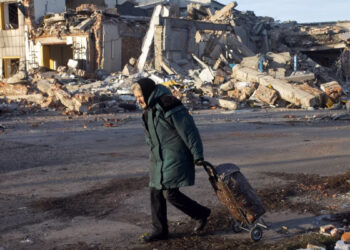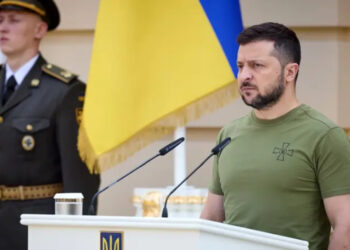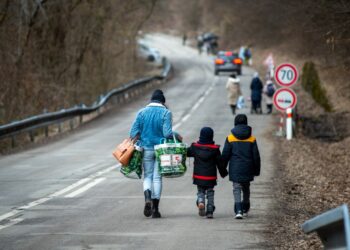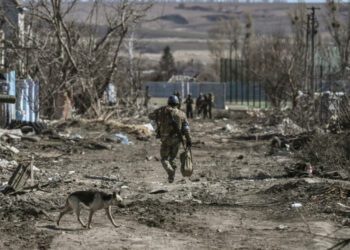“Congratulations, you are one step away from a lifetime experience in Chernobyl,” reads the confirmation email from one of the tour companies authorized to bring visitors in the city of Chernobyl and Pripyat in Ukraine.
It’s an immersive adventure that can bring you back to the Soviet times, or at the very least help you imagine what characters in the historical HBO drama Chernobyl went through. Within a month, the show has emerged with a cumulative audience of eight million. The miniseries, released in May, examines what happened before and after the nuclear accident that took place 33 years ago on the night of April 26 near the city of Pripyat in the north of the former Ukrainian Soviet Socialist Republic.
In the first three months of 2019, 11,067 tourists visited Chernobyl and the ghost city of Pripyat, and 9,217 of them were foreigners. The HBO show increased interest in visiting the Chernobyl Nuclear Power Plant that exploded after unsanctioned experiments on the reactor, with tour bookings jumping 40 percent only this summer.
Chernobyl Tour was the first company to include a tour entirely dedicated to the five episodes of the show.
“We started developing this tour as soon as the first episode of the HBO series was released. The whole development process took us a week,” Yaroslav Yemelianenko, CEO and founder of Chernobyl Tour, told The Globe Post.
Yemelianenko explained that the interest in the Chernobyl zone grew gradually over several years regardless of TV projects. He said most of the tourists come from the United Kingdom, followed by citizens of Poland, Germany and the United States.
“We spend a lot of money on Google ads and do our best to interest tourists as much as possible, telling them not fictional stories, but the facts of the disaster. Half of the money that we get from trips are invested in the ad of the exclusion zone and we suppose that amount of tourists will increase up to 110-120 thousand people this year,” Yemelianenko said.
The TV series that scored 19 Emmy nominations, including a nod in the limited series category, triggered not only a spike in visits to the site, but also criticism of tourists taking selfies on the site of the tragedy.
“It’s wonderful that #ChernobylHBO has inspired a wave of tourism to the Zone of Exclusion. But yes, I’ve seen the photos going around. If you visit, please remember that a terrible tragedy occurred there. Comport yourselves with respect for all who suffered and sacrificed,” tweeted Craig Mazin, the writer-producer of the series.
In the aftermath of the 1986 nuclear disaster that gives to Chernobyl its apocalyptic view, Chernobyl is becoming a must-see place, and Ukraine wants to attract tourists to help change its dangerous reputation.
The consequences of the explosion are well-known not only in Ukraine and neighboring Belarus and Russia, but all over the world. The disaster remains the most catastrophic nuclear accident of the 20th century. Comparing to the meltdown of three reactors at the Japanese Fukushima Daiichi nuclear power plant in 2011, Chernobyl was far more dangerous, as damage to the reactor core unspooled very rapidly and violently, according to Edwin Lyman, a senior scientist and acting director for the Union of Concerned Scientists Nuclear Safety project.
Now, the Ukrainian government and its President Volodymyr Zelensky want to clear Chernobyl of the dark-tourism destination label, and therefore make it an official tourist attraction with a special decree. This would entail more regulations of tours, including the introduction of an electronic ticketing system to crackdown on corruption, and efforts to improve mobile phone reception – inside the Chernobyl zone, about 19 miles (30 kilometers) away from the reactor, cell service stops working.
Officially, the site has been open to tourists since the late 1990s, but its popularity has increased over the last five to 10 years. Everyone who is at least 18 years-old can book a guided tour. Right now, it is offered by fewer than 20 companies, and they all offer approximately the same services for the same price.
The one day trip is done in a group of about 12 people for $100, but private tours are also available with a chance to sleep in a building that is now a hotel, for around $300, including food. Visitors have to follow certain rules. It is forbidden to touch or take anything from the territory, and enter without a valid passport.
All the rules are listed on a document that has to be signed before getting into the so-called exclusion zone, which starts 19 miles before the reactor. Tourists certify that they did not take any drugs or alcohol 24 hours before the visit, taking all responsibilities of going to a radioactive zone.
The estimated 116,000 people who lived in the town of Pripyat and within the 19 miles radius of the site were evacuated in the weeks following the incident, though the effects of radiation exposure for the broader population of Ukraine and Europe is still an ongoing concern. The Chernobyl tour companies guarantee that all routes are far away from contaminated areas and that personal irradiation dose received during one day in the zone are equal to a one-hour flight.
Nevertheless, it is still strictly forbidden for people to enter the zone on their own, without guides. Although there are exceptions to the rule. In 2017, Stephen Bakker, a New Zealander thrilled by the Chernobyl story and driven by his love for exploring abandoned places, spent five days within the Chernobyl exclusion zone, sneaking past security, hiking sixty kilometers at night and sleeping in an abandoned apartment.
“It isn’t too difficult to organize someone to take you in, there is an underground scene where illegal trips can be organized. I found out about this on the internet. The actually sneaking in was quite difficult, it involved a lot of hiking through the forest and hiding from cars,” Bakker told The Globe Post.
The 27 years-old travelers, who watched a lot of documentaries about Chernobyl when he was young, was traveling in Europe and decided to head to Ukraine to see the site.
“The experience was really interesting to see how soviet life was in the 80s. The thrill of getting caught was also really exciting,” he said.
































